Meinong's Scenic Bike Trails
◎English translation: Wendy Wei Chang
◎Photos by Pao Chung-hui, Li Ming-hui
Meinong is a 15 kilometer by 9 kilometer Hakka village, located in northeastern Kaohsiung. With its mountains, agrarian communities, historical architecture, various temples and scenic landscape, autumn is a great time to come. Seven bike trails have been created, making it easy and convenient to explore the village. Cycle past the rice paddies, watch the year's second harvest and take in the scenic countryside.

The seven cycling trails total 40 kilometers and are marked in the colors of the rainbow. The Red path takes cyclists past many historical and architectural attractions, the Orange features folk culture, Yellow runs around the lake, Green features Meinong's rich literature history, Blue runs along Meinong's irrigation ducts, and Indigo allows visitors to get an up close look at Hakka culture, with Purple exhibiting various religious buildings. All trails are well marked and provide information about the scenic spots along the way. This makes it easy for cyclists to learn about Meinong's history, while still getting the chance to enjoying its beautiful scenery.
The architectural red trail is 4.7 kilometers long and takes approximately 30 minutes. Historical sites include Yongang Street's East Gate Tower. This was Meinong's first street that was built in 1755. It historically protected the Hakka people from the previously hostile Taiwanese Plains Aboriginals and Hoklo people. Continuing along, cyclists can see Meinong's only remaining blue dress shop. Jinsing Blue Dress Shop continues the skillful artisanship of hand-made Hakka traditional, elegant blue dresses and flower print handbags. Further along the path is Meinong's Old Bridge, Rice Noodle Street and two types of Earth God shrines. The first type is dedicated to Li She Jhen Guan and is always found on the top of a small mound of earth. The other is dedicated to De Sheng Guan, which can be distinguished by its triangular cover. Along Jhongshan Road vistors will find a kiln, which is a grade-three historical site and formally used for sacrificing written paper. Hakka people revere the written word and therefore did not throw paper with writing on it away.
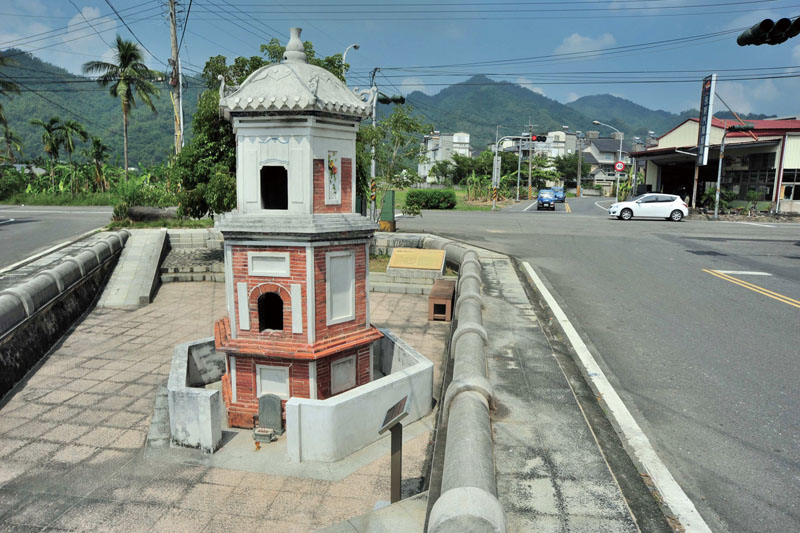 The Orange trail is 5.4 kilometers and takes approximately 32 minutes to finish. Visitors can see more kilns for sacrificing written paper and the Fu An and Meinong folk villages. Fu An Village was previously known as "Nioupu", which means cattle farm in Mandarin. It was once the location of huge plains before the village was developed. Many residents used it for their cows to graze and slowly became a place where the cows were kept. At Meinong's Folk Village visitors can see traditional Hakka umbrellas,
The Orange trail is 5.4 kilometers and takes approximately 32 minutes to finish. Visitors can see more kilns for sacrificing written paper and the Fu An and Meinong folk villages. Fu An Village was previously known as "Nioupu", which means cattle farm in Mandarin. It was once the location of huge plains before the village was developed. Many residents used it for their cows to graze and slowly became a place where the cows were kept. At Meinong's Folk Village visitors can see traditional Hakka umbrellas, 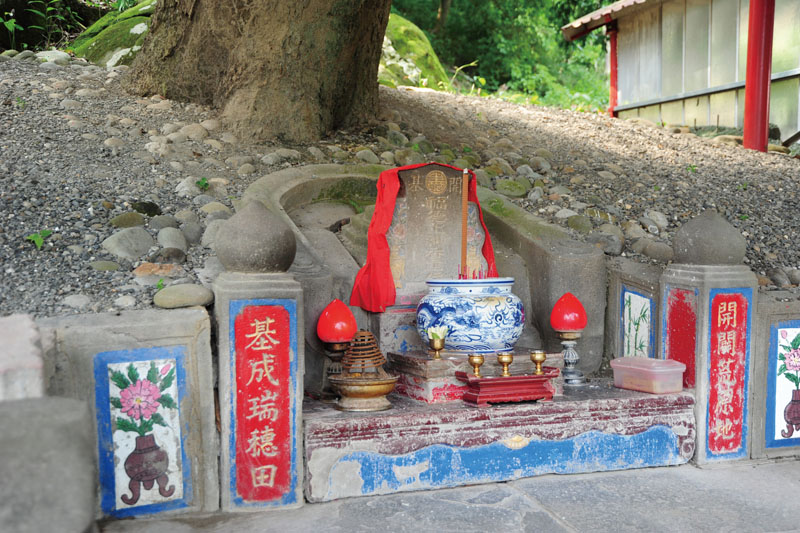 arts and crafts being made. There is a gift shop to bring some home some as souvenirs.
arts and crafts being made. There is a gift shop to bring some home some as souvenirs.
The Yellow trail winds around Jhongjheng Lake and is 5.4 kilometers long. With its mountains and pavilions, it is like a breath-taking Chinese landscape painting. The best time to visit is at sunrise or sunset. Here, cyclists can visit Jhingjheng Lake Visitor Center, Kaohsiung Hakka Cultural Museum, Tai-an and Mincyuan Roads. Meinong K.c.s. Umbrella is also in close proximity to the lake and is another place where visitors can buy delicate, oil-paper, painted umbrellas. Traditional Hakka art and printings can also be purchased there. The Hakka Cultural Museum presents Meinong's history, Hakka culture, music, historical architecture (such as Hakka traditional houses) and its tobacco production legacy.
The Green trail is 4.1 kilometers long and includes Chong Li-he Memorial Museum, Shuangsi Tropical Viviparous Forest and beautiful Yellow Butterfly Valley. Chong Li-he Memorial Museum is the village's first privately established museum. Chong Li-he, was the famous Taiwanese writer, where he produced his famous literature and lived throughout his later years. There are also walking trails that wind around the outside of the museum. Along the trails there are plaques mounted on stones which contain quote from poetry of different famous Taiwanese writers. With its river and butterflies, Shuangsi Tropical Viviparous Forest is a great place to enjoy nature walks and admire its variety of tropical tress. May is butterfly breading season, when visitors can see tens of thousands of butterflies in Yellow Butterfly Valley.
The Blue trail is 9 kilometers long and the longest out of the entire seven bike trails. It takes approximately 54 minutes. This takes cyclists over Meinong's Water Bridge, to Yuan Hsiang Yuan Cultural Village and ends up at Jhuzihmen Hydroelectric Power Plant. Cyclists can see Meinong's historical irrigation ducts and the opportunity to walk around the 100-year-old Jhuzihmen Hydroelectric Power Plant. The European Baroque style buildings are certainly unique to the region.
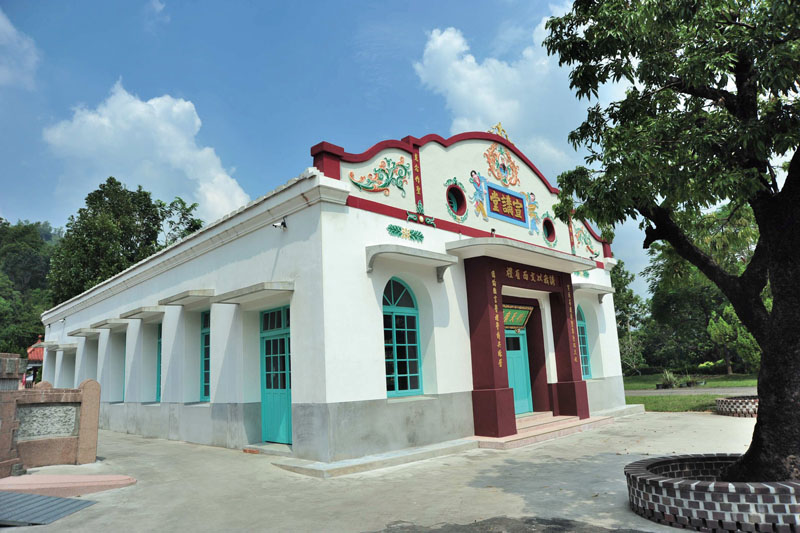 The Indigo trail is 6.4 kilometers long and takes approximately 40 minutes. This passes the Guanshan Temple, Nioujiaowan River, Meinong Kiln, Founding Father Earth God mound and the historical Yimin temple. The temple marks the historical conflicts that previously occurred between the Hoklo and Hakka people during the Cing Dynasty. Inside Meinong Kiln, ceramic murals are on display and visitors can watch artists work on customized murals which are ordered by various groups from all over Taiwan. They also offer visitors the opportunity to participate in ceramic DIY classes. The 200 year old mound which is a commemoration to the founding father of the village is also located in the back.
The Indigo trail is 6.4 kilometers long and takes approximately 40 minutes. This passes the Guanshan Temple, Nioujiaowan River, Meinong Kiln, Founding Father Earth God mound and the historical Yimin temple. The temple marks the historical conflicts that previously occurred between the Hoklo and Hakka people during the Cing Dynasty. Inside Meinong Kiln, ceramic murals are on display and visitors can watch artists work on customized murals which are ordered by various groups from all over Taiwan. They also offer visitors the opportunity to participate in ceramic DIY classes. The 200 year old mound which is a commemoration to the founding father of the village is also located in the back.
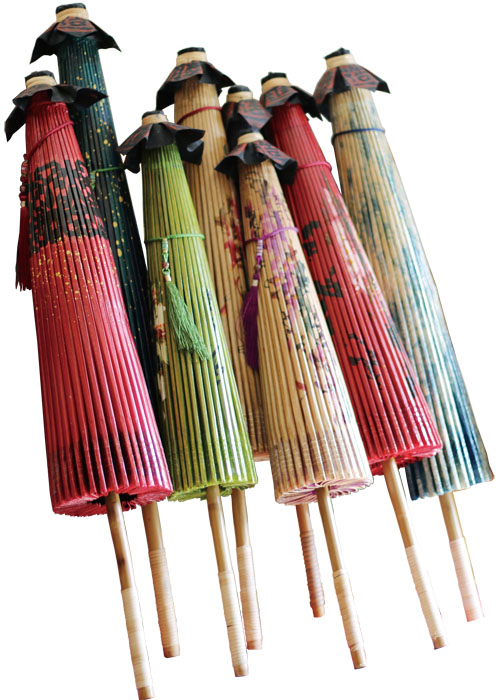 The Purple trail is 5.1 kilometers long and takes approximately 30 minutes. This takes cyclists past traditional architectural buildings including Jhan's compound and the 40 acre Biological Park at Longdu Elementary School. The elementary school was previously an agriculture school. There is also a three acre farm, where the elementary school teaches students hands on lessons about farming.
The Purple trail is 5.1 kilometers long and takes approximately 30 minutes. This takes cyclists past traditional architectural buildings including Jhan's compound and the 40 acre Biological Park at Longdu Elementary School. The elementary school was previously an agriculture school. There is also a three acre farm, where the elementary school teaches students hands on lessons about farming.
Cycling in Meinong is easy to navigate, so visitor won't get lost. They can take in the historical sites and experience the traditional agrarian culture of the Hakka people. Harvest season is a great time to come and witness the Hakka people working the fields and the beautiful golden rice paddies. Meinong is also great in winter as visitors can watch the famous White Jade Raddish harvest. Come and enjoy the regions unique culture and its sites.
騎進秋天 微風美濃
◎文/李明潓
◎攝影/鮑忠暉、李明潓
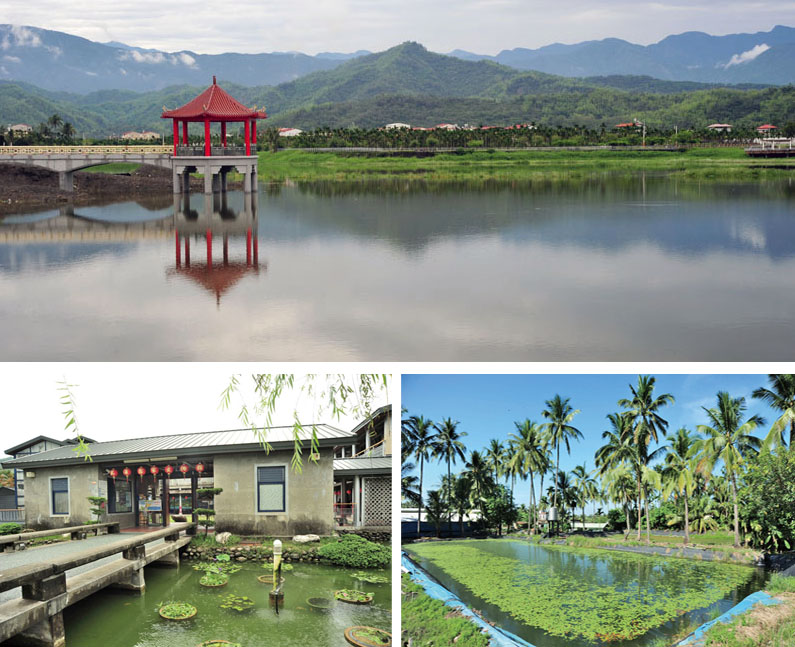 美濃是台灣典型的客家庄,位於高雄市東北、屏東平原北部,南北長15公里、東西寬9公里,在曼妙的山城景致和田野風光中,美濃還擁有濃厚人文色彩、古蹟歷史、宗教信仰和自然生態。每年第二期稻作收割以後,安靜美麗的美濃就進入涼爽的季節,空氣中飄散悠閒的情調,這是秋天的味道。秋高氣爽的美濃,最適合放慢腳步,駐足田間,享受鄉村樂活之旅,「美濃七彩單車道」便成了這個時節最好的選擇。
美濃是台灣典型的客家庄,位於高雄市東北、屏東平原北部,南北長15公里、東西寬9公里,在曼妙的山城景致和田野風光中,美濃還擁有濃厚人文色彩、古蹟歷史、宗教信仰和自然生態。每年第二期稻作收割以後,安靜美麗的美濃就進入涼爽的季節,空氣中飄散悠閒的情調,這是秋天的味道。秋高氣爽的美濃,最適合放慢腳步,駐足田間,享受鄉村樂活之旅,「美濃七彩單車道」便成了這個時節最好的選擇。
「美濃七彩單車道」以紅橙黃綠藍靛紫七彩顏色命名,宛如彩虹落到幸福聚落,包括紅線「古蹟之旅」、橘線「民俗之旅」、黃線「親水之旅」、綠線「文學之旅」、藍線「水圳之旅」、紫線「鄉土之旅」、靛線「宗教之旅」、路線總長度40公里,沿途電桿標示各色路線及景點導覽解說,欣賞美濃風光之餘,也對美濃的歷史人文有深刻認識。
「紅線」全長4.7公里,單趟騎程約30分鐘,途經東門樓、錦興藍衫店、美濃舊橋、粄條街、以及里社真官、德勝公、敬字亭等百年古蹟。東門樓位在美濃最早發展的市街-永安街,1755年基於防衛的需要而建造;老街上的錦興行是美濃碩果僅存的藍衫店,老師傅堅守傳統,使用傳統器具手工製作出樸實典雅的客家傳統藍衫和客家花布包。中山路上的敬字亭是三級古蹟,用途為「燒紙爐」,因為客家人認為寫過的紙不能隨意丟棄,必須拿到敬字亭裡焚燒。
「橘線」全程5.4公里,單趟騎程約32分鐘,途經敬字亭、福安街老聚落、美濃民俗村。其中,福安舊名「牛埔仔」,乃因此地在開發前有一大片雜草,吸引許多的美濃居民驅趕牛隻到此放牧,漸漸地便成為一個作為放牛吃草之所在地,因此取名為「牛埔」;美濃民俗村內展示了豐富的美濃傳統客家文物。
「黃線」全長5.4公里,是環中正湖的路線,途經中正湖旅遊服務中心、客家文物館、泰安路 、民權路。拜訪中正湖最浪漫的時機,在破曉之際與黃昏時分,變化萬千的朦朧天色,映照著遠山近亭,彷彿美麗的山水潑墨。來到美濃,當然不能錯過精巧美麗的油紙傘,中正湖畔附近有一家「廣進勝紙傘廠」,結合剪紙藝術及版印藝術,將美濃紙傘由觀光商品提升為藝術珍品。「客家文物館」詳盡介紹美濃的歷史、生態、古蹟、到客家音樂、菸葉農作物、夥房、生活型態,讓遊客更了解客家的文化之美。
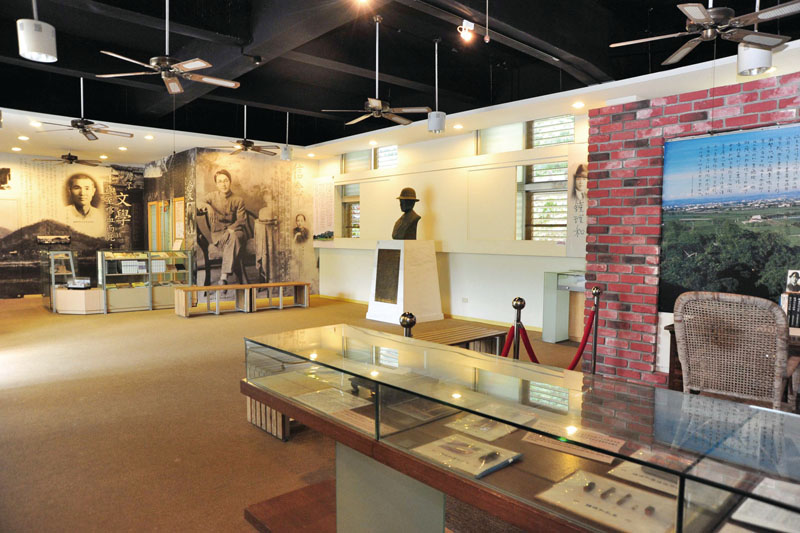 「綠線」全程4.1公里,這條路線除了充滿文學氣息外,還能置身美濃的優美生態中。途經文學家鍾理和紀念館、雙溪熱帶母樹林、並以美麗的黃蝶翠谷為終點。「鍾理和紀念館」是台灣第一座平民文學館,是台灣第一代的鄉土文學作家鍾理和晚年生活、寫作的故居,紀念館周圍還設有「文學步道」,清幽林蔭中可見多座石碑刻有許多台灣文學作家的詩句,讓人們緬懷作家的豐沛文采。「雙溪熱帶母樹林」種植了數百種熱帶樹,是絕佳的森林浴場所和天然的生態教室。「黃蝶翠谷」則因美濃雙溪的天然資源豐富,溪澗間是蝴蝶孕育的天堂,每年5月進入繁殖季節可見到萬蝶飛舞的壯觀景象。
「綠線」全程4.1公里,這條路線除了充滿文學氣息外,還能置身美濃的優美生態中。途經文學家鍾理和紀念館、雙溪熱帶母樹林、並以美麗的黃蝶翠谷為終點。「鍾理和紀念館」是台灣第一座平民文學館,是台灣第一代的鄉土文學作家鍾理和晚年生活、寫作的故居,紀念館周圍還設有「文學步道」,清幽林蔭中可見多座石碑刻有許多台灣文學作家的詩句,讓人們緬懷作家的豐沛文采。「雙溪熱帶母樹林」種植了數百種熱帶樹,是絕佳的森林浴場所和天然的生態教室。「黃蝶翠谷」則因美濃雙溪的天然資源豐富,溪澗間是蝴蝶孕育的天堂,每年5月進入繁殖季節可見到萬蝶飛舞的壯觀景象。
「藍線」沿線9公里,是7條路線中最長的一條 ,單趟騎程約54分鐘,途經美濃水橋、原鄉緣紙傘文化村、終點為竹子門水力發電廠,可以飽覽美濃農業水圳風光,探索紙傘產業文化,以及見證擁有百年歷史的「竹子門發電廠」,廠房外觀造型獨特,充滿歐式的巴洛克風格,很難想像裡面是一處發電機房。
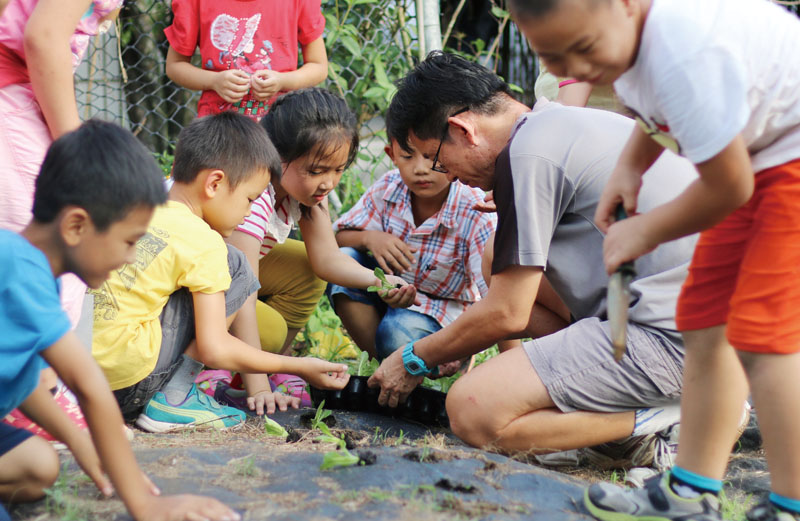 「靛線」長6.4公里,單趟騎程約40分鐘,途經長年鼓吹客家文風的廣善堂、牛角灣、美濃窯陶藝、客家開基伯公壇、以及清朝閩客族群衝突重要象徵古蹟的義民廟等。「美濃窯」園區裡到處可見以陶為素材的「陶壁公共藝術」,以各種釉色及圖騰表現出不同的文化意境,還可以預約報名捏陶DIY、窯燒課程,體驗創作樂趣。美濃窯園區後方有一處「開基伯公壇」,是美濃地區的第一座土地伯公壇,距今已有200多年的歷史,是美濃居民的重要信仰。
「靛線」長6.4公里,單趟騎程約40分鐘,途經長年鼓吹客家文風的廣善堂、牛角灣、美濃窯陶藝、客家開基伯公壇、以及清朝閩客族群衝突重要象徵古蹟的義民廟等。「美濃窯」園區裡到處可見以陶為素材的「陶壁公共藝術」,以各種釉色及圖騰表現出不同的文化意境,還可以預約報名捏陶DIY、窯燒課程,體驗創作樂趣。美濃窯園區後方有一處「開基伯公壇」,是美濃地區的第一座土地伯公壇,距今已有200多年的歷史,是美濃居民的重要信仰。
「紫線」全程5.1公里,單趟騎程約30分鐘,途經傳統客家建築的詹家夥房,以及擁有40公頃面積的龍肚國小自然生態園區。龍肚國小的前身是農業發展學校,改制後,留下近3公頃的實習農場成為老師和學童的「活教材」,豐富的生態教學資源讓小朋友透過感官實際的操作,體驗不一樣的學習經驗,進而與大自然和樂相處。
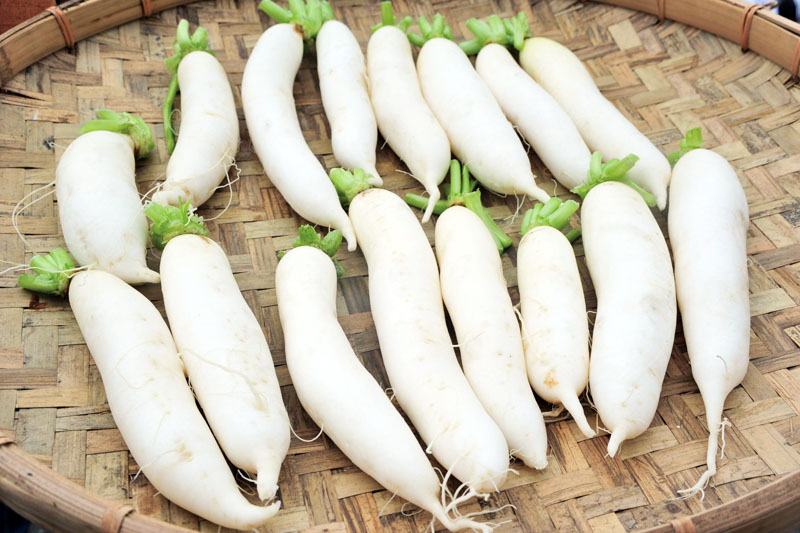 騎在秋天的美濃,不必擔心迷路,不管哪一條路線,還可以看到兩旁的田地從金黃色的稻子換成各種豐富多樣的綠色作物,包括冬季葉菜類、瓜類和豆類,當然還有最受歡迎的「白玉蘿蔔」,這個品種的蘿蔔細長瘦小,吃起來清脆鮮美,是美濃冬季限定的好滋味,歡迎漫遊美濃,品味當季的反璞歸真。
騎在秋天的美濃,不必擔心迷路,不管哪一條路線,還可以看到兩旁的田地從金黃色的稻子換成各種豐富多樣的綠色作物,包括冬季葉菜類、瓜類和豆類,當然還有最受歡迎的「白玉蘿蔔」,這個品種的蘿蔔細長瘦小,吃起來清脆鮮美,是美濃冬季限定的好滋味,歡迎漫遊美濃,品味當季的反璞歸真。